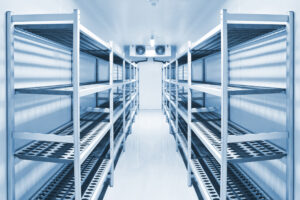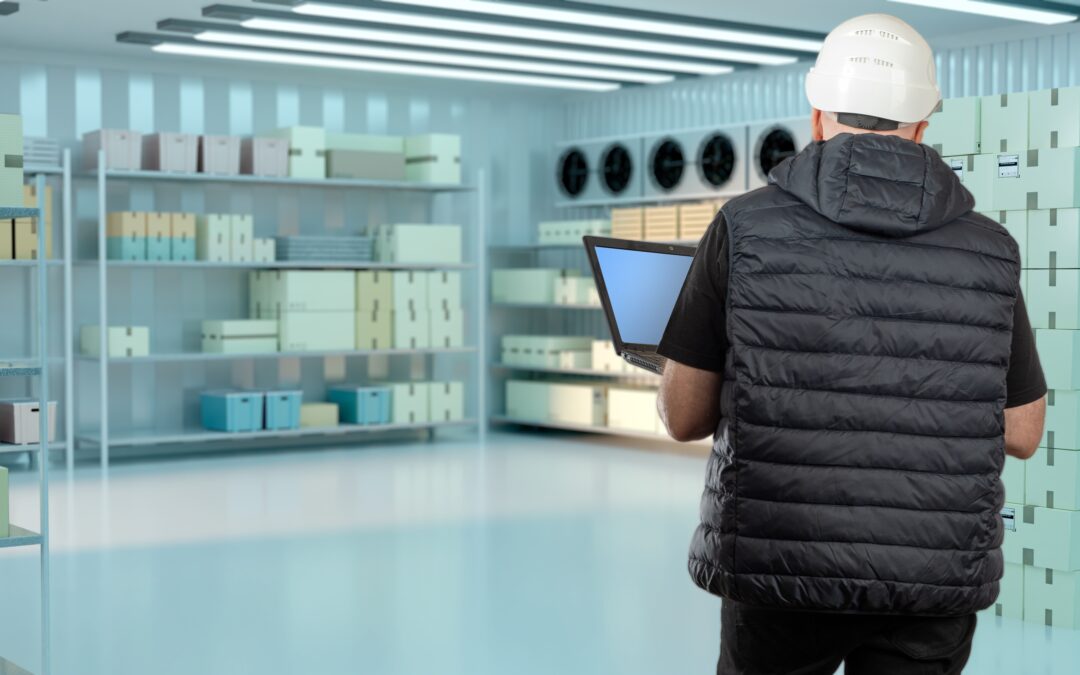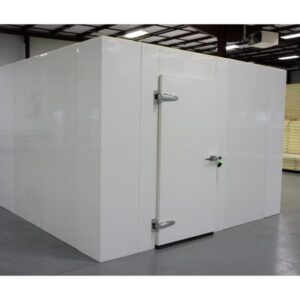Walk-in coolers are an essential tool for many businesses in the food and beverage industry. Found in restaurants, grocery stores, and convenience stores, these refrigeration units play a crucial role in preserving perishable goods and maintaining food safety. But how exactly do walk-in coolers work? What technology allows them to keep products consistently cool, even in high-demand commercial settings?
This blog explores the mechanics behind walk-in coolers, their critical components, and why they are indispensable for businesses. Whether you’re interested in commercial walk-in coolers for your restaurant or thinking about installing a convenience store walk-in cooler, this guide demystifies their operations and highlights their importance in modern commerce.
What Are Walk in Coolers

Walk-in coolers are large refrigeration units designed to store bulk quantities of perishable items at regulated temperatures. Unlike standard refrigerators, walk-in coolers are spacious enough to allow people to enter, hence the term “walk-in.” They range in size from relatively small units designed for smaller businesses to massive systems used in warehouses and distribution centers.
These coolers are commonly found in many settings, including:
- Restaurants and Food Services: Keeping inventory fresh and maintaining compliance with health codes.
- Grocery and Convenience Stores: Storing a variety of items, from dairy products to beverages.
- Floral and Horticultural Retailers: Preserving the aesthetic value of floral products.
- Pharmaceutical Industries: Safeguarding temperature-sensitive medications and chemicals.
The common denominator across all applications is the requirement for precise cooling to meet industry-specific needs.
The Science Behind Walk in Coolers
To understand how walk-in coolers work, one must first understand the science of refrigeration. At its core, refrigeration is the process of removing heat from an enclosed space and dissipating it elsewhere. Walk-in coolers achieve this through a systematic cycle involving several components.
Key Components of Walk in Coolers
1. Refrigeration Unit
The refrigeration unit is the central element of any walk-in cooler. It works by circulating a refrigerant, a chemical compound that changes states between liquid and gas to absorb and dissipate heat. Most commercial walk-in coolers utilize high-efficiency units to sustain optimal cooling while minimizing energy usage.
2. Compressor
The compressor is responsible for pressurizing the refrigerant, causing it to heat up and enter a gaseous state. Think of the compressor as the “engine” of the refrigeration system, driving the cooling process forward.
3. Condenser Coil
The heated refrigerant gas is forced through the condenser coil, where it releases the absorbed heat to the outside environment. This component is vital for maintaining a low internal temperature within the walk-in cooler.
4. Evaporator Coil
Once the refrigerant cools down, it passes through the evaporator coil inside the walk-in cooler. Here, it absorbs heat from the cooler’s interior, turning back into a gas and restarting the refrigeration cycle.
5. Insulated Panels
Walk-in coolers are equipped with insulated walls made of foam or fiberglass sandwiched between layers of metal. These panels prevent external heat from entering, ensuring the internal temperature stays consistent.
How Walk in Coolers Maintain Precise Temperatures

One of the standout features of commercial walk-in coolers is their ability to maintain precise temperatures, even with frequent use. Here are the factors that make this possible:
Advanced Thermostats
Modern walk-in coolers are equipped with advanced thermostats, allowing operators to set and monitor desired temperature ranges. These thermostats ensure that the cooler adjusts dynamically to maintain its conditions, even if the ambient temperature fluctuates.
Door Gaskets and Seals
Specialized gaskets and seals on doors are designed to prevent air leaks. This technology minimizes energy loss and keeps warm air from entering the cooler.
Automatic Door Closers
The frequent opening and closing of cooler doors can cause temperature fluctuations. Automatic door closers counteract this by ensuring the door is sealed immediately after use, maintaining a stable internal environment.
The Role of Walk in Coolers in Different Industries
Walk-in coolers aren’t mere convenience tools; they are business-critical assets that directly influence operations. Let’s explore how they are utilized in various sectors.
1. Convenience Stores
Convenience store walk-in coolers are designed to optimize the layout for easy customer access. They store a range of items, including beverages, dairy products, and prepackaged foods, ensuring customers receive chilled products every time.
2. Restaurants
Restaurants rely on commercial walk-in coolers to keep ingredients fresh and safe for consumption. Strict food safety regulations often mandate the use of properly functioning refrigeration units to reduce risks of foodborne illnesses.
3. Agriculture
Farmers and agricultural producers use walk-in coolers to preserve harvested crops. Cooling their produce soon after harvest ensures better freshness and reduces post-harvest losses.
Energy Efficiency and Environmental Impact
Walk-in coolers are going green! With increased awareness of environmental impact and energy costs, manufacturers are now producing eco-friendly models.
Innovations in Energy Efficiency
- LED Lighting: Reduces energy usage within the cooler.
- High-Efficiency Compressors: Consume less electricity while delivering the same cooling power.
- Smart Monitoring Systems: Provide real-time data on energy consumption and suggest optimizations.
Eco-Friendly Refrigerants
Traditional refrigerants, such as chlorofluorocarbons (CFCs), are now being replaced with environmentally friendly options like hydrofluorocarbon (HFC)-134a and propane (R-290). These alternatives have lower Global Warming Potential (GWP), lessening their impact on the environment.
Selecting the Right Walk in Cooler
When choosing a walk-in cooler for your business, consider the following factors:
- Size and Capacity
- Energy Efficiency Ratings
- Insulation Thickness
- Ease of Maintenance and Repair
- Customization Options to align with specific industry needs.
For convenience store walk-in coolers, focusing on customer accessibility and visibility should be key priorities. On the other hand, restaurants may prioritize quick and efficient internal storage options.
Leveraging Walk in Coolers for Business Growth
Having a reliable walk-in cooler does more than preserve products; it supports operational efficiency and drives customer satisfaction. Reliable refrigeration ensures your business meets health and safety standards, reducing potential liabilities and wasted inventory.-


